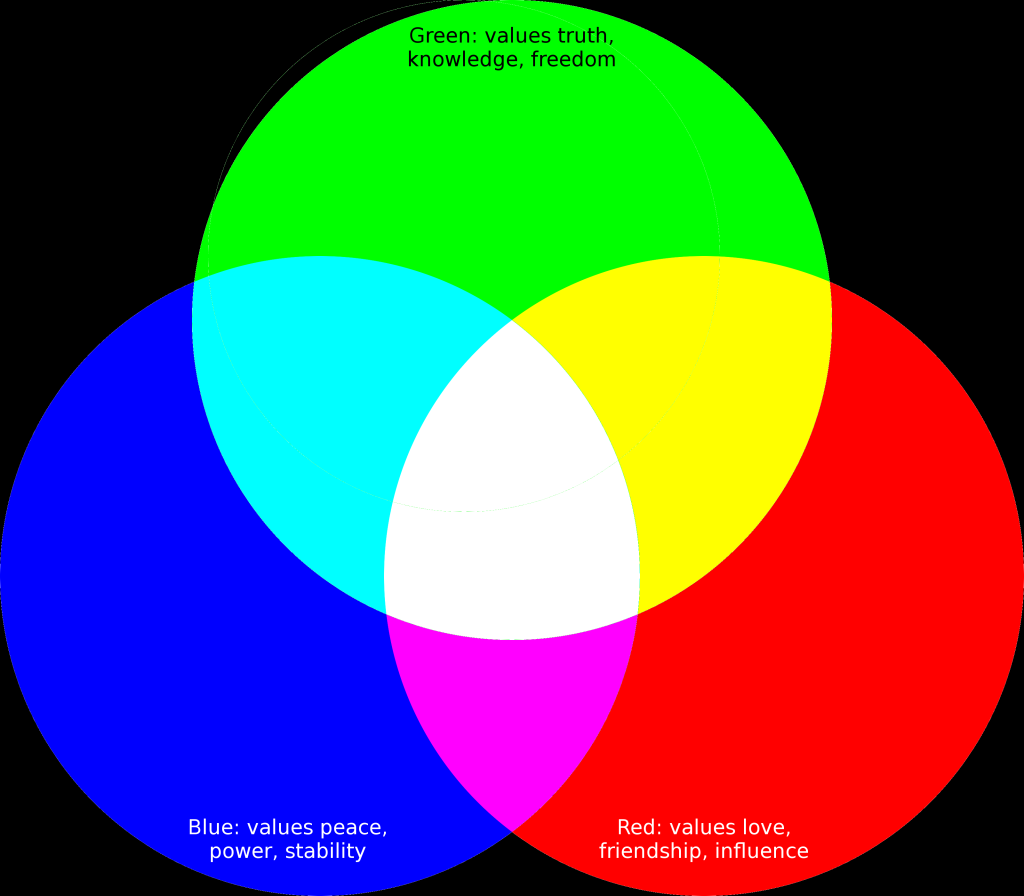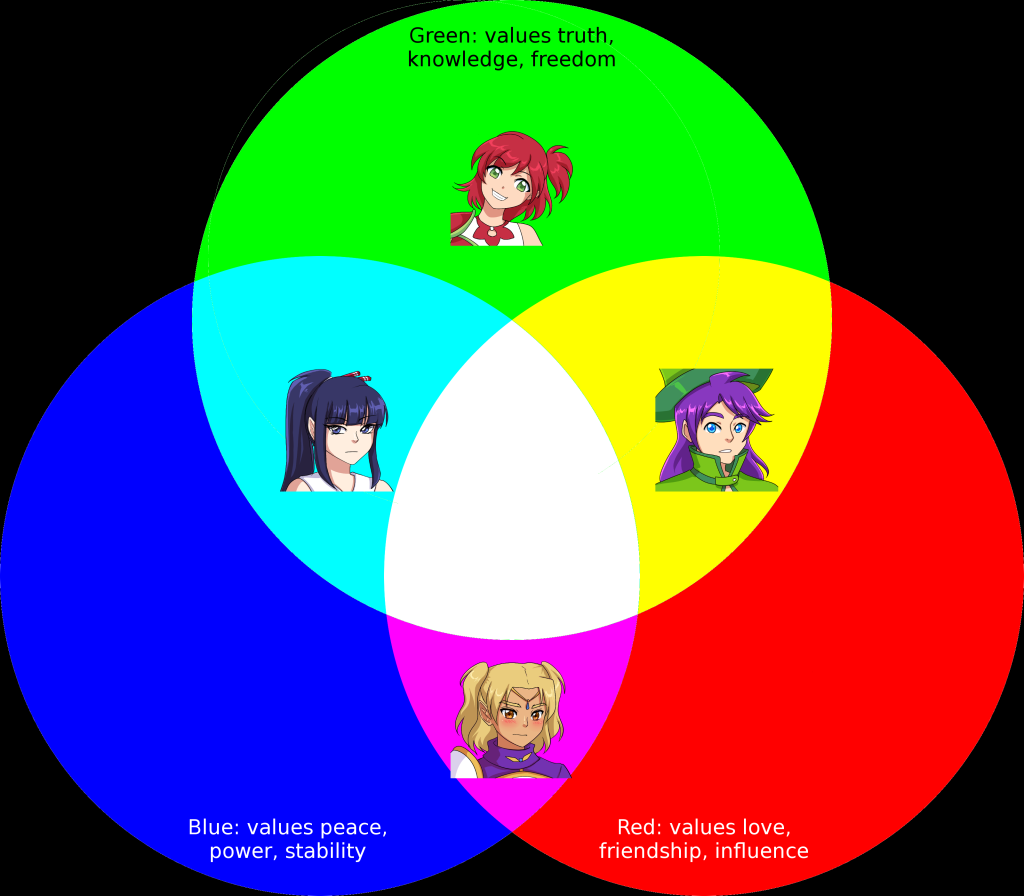I could share a little bit more pixel art today, but I think I’ll save that for when it’s fully done, so instead I’ll talk about something I very rarely touch on: character motivations!
While continuing to gather references and notes for the new promotional image I mentioned last week, I wound up creating a Venn diagram. This was the start (and yes, I know the circles aren’t centered correctly or even close to it):
I’ll fill it in a little bit down below, but you can’t see the finished version since it would ruin too many things. :P Why would I classify things this way? Well, bear with me for a bit!
When I was thirteen years old, my characters and stories were simple good and evil. But by 2009 that wouldn’t cut it anymore with me; my characters had grown enough that they didn’t fit on a sliding scale of good to evil.
So then I tried to classify them with the classic Dungeons & Dragons character alignment system. By that metric, though, the story seemed like it was primarily a clash between lawful good, neutral good, and chaotic good—or maybe it was lawful neutral, true neutral, and chaotic good. Or maybe it was lawful good, chaotic good, and another set of chaotic good. Or lawful neutral and two sets of neutral good?
Or maybe, just maybe, it was a clash of lawful evil, neutral evil, and chaotic evil.
Classifying my characters this way just didn’t work out. You might be familiar with this image showcasing why:
But, as the title implies and as the main promotional page says, the story in Dreamblazers is about the dreams that people have, their values, their visions for the future, and the conflicts they inevitably have when those visions have to butt heads.
So eventually I settled on defining characters by their highest goals and values. This way it doesn’t matter whether they’re good or neutral (or even evil), but instead focuses on why they’d clash! I’ll fill in just a couple example faces and leave the rest to your imagination:
Note that although I’ve only labeled three groups, there are seven here: green, aquamarine, white, yellow, blue, magenta, and red! And, actually, even within their groups a character could be closer to one color or another, but here I’ve intentionally centered them to obscure that. :P
I emphasized above that these circles represent their highest values because most characters will value all of these things to at least some degree. For example:
- Leaf in green values friendship, but if a friendship kept her from freedom then she’d let it go.
- Tango in yellow loves peace, but he values friends much more even though new friendships mean opening himself up to fighting with them or being involved when they fight with each other.
- Cecille in pink wants more knowledge, but not if it takes too much time away from her task of protecting people.
- Lash in aquamarine likes having influence, all else being equal, but won’t chase after it if that means giving up one her other values.
Although I didn’t explicitly put it in a diagram until these past few days, this sort of thinking has given me a better grasp on my characters’ motivations, helping me out a lot while writing for them. Even if you only look at these four characters and the small teasers I’ve given on the Dialogue page, you’ll probably see it shining through. :D



